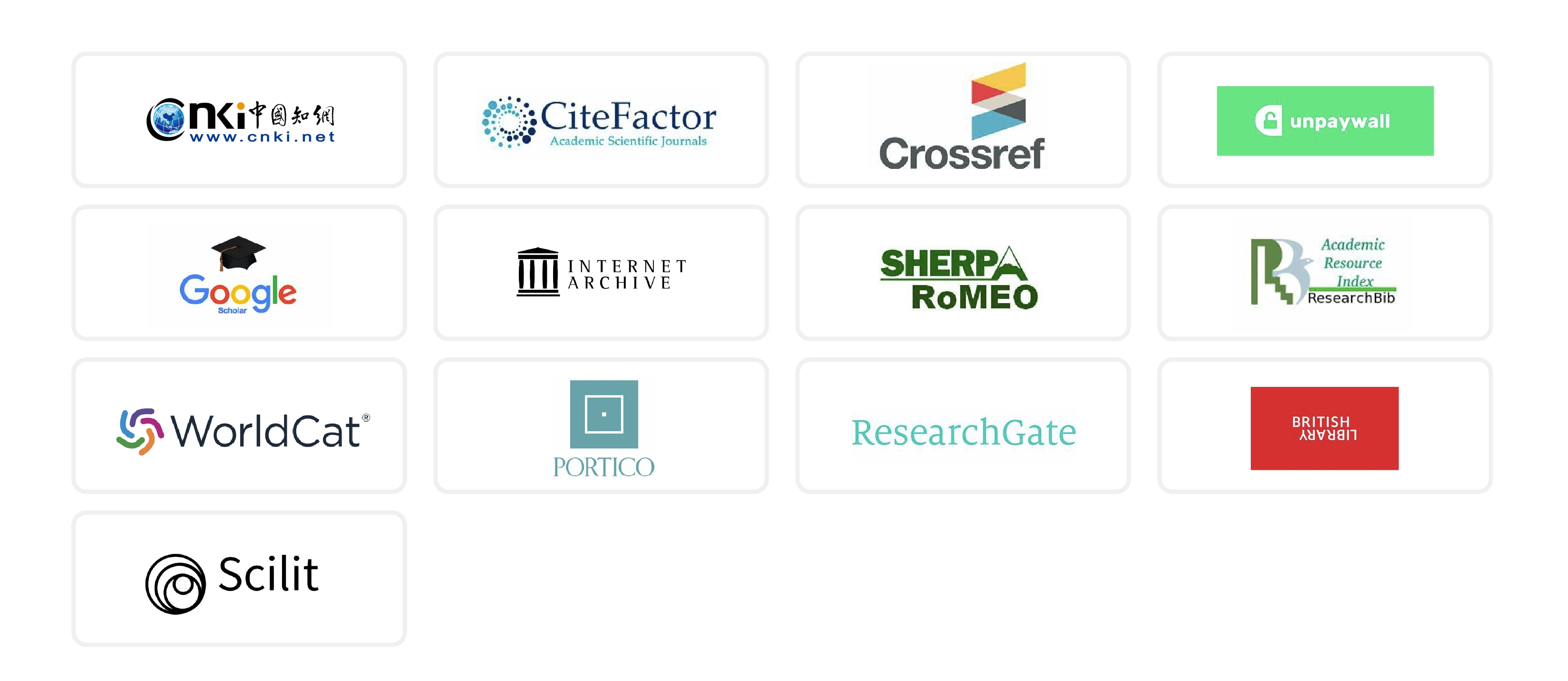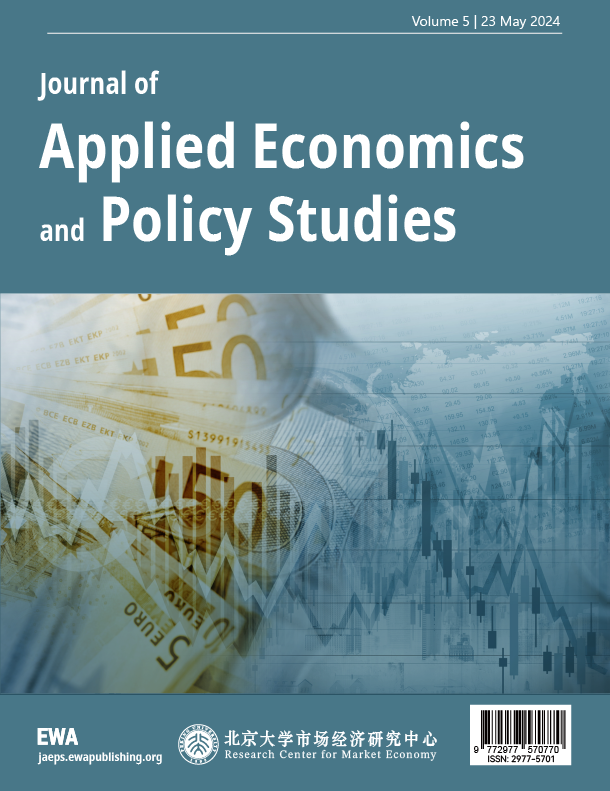

About JAEPSJournal of Applied Economics and Policy Studies (JAEPS) is an open-access, peer-reviewed academic journal hosted by Peking University Research Centre for Market Economy (RCME) and published by EWA Publishing. JAEPS is published irregularly. JAEPS present latest theoretical and methodological discussions to bear on the scholarly works covering economic theories, econometric analyses, as well as multifaceted issues arising out of emerging concerns from different industries and debates surrounding latest policies. Situated at the forefront of the interdisciplinary fields of applied economics and policy studies, this journal seeks to bring together the scholarly insights centering on economic development, infrastructure development, macroeconomic policy, governance of welfare policy, policies and governance of emerging markets, and relevant subfields that trace to the discipline of applied economics, public policy, policy studies, and combined fields of the aforementioned. JAEPS is dedicated to the gathering of intellectual views by scholars and policymakers. The articles included are relevant for scholars, policymakers, and students of economics, policy studies, and otherwise interdisciplinary programs.For more details of the JAEPS scope, please refer to the Aim&Scope page. For more information about the journal, please refer to the FAQ page or contact info@ewapublishing.org. |
| Aims & scope of JAEPS are: ·Economics ·Finance ·Management |
Article processing charge
A one-time Article Processing Charge (APC) of 450 USD (US Dollars) applies to papers accepted after peer review. excluding taxes.
Open access policy
This is an open access journal which means that all content is freely available without charge to the user or his/her institution. (CC BY 4.0 license).
Your rights
These licenses afford authors copyright while enabling the public to reuse and adapt the content.
Peer-review process
Our blind and multi-reviewer process ensures that all articles are rigorously evaluated based on their intellectual merit and contribution to the field.
Editors View full editorial board

Bratislava, Slovakia

Aberdeen, UK

Beijing, China
qin.econpku@gmail.com

London, United Kingdom
Canh.Dang@kcl.ac.uk
Latest articles View all articles
As one of the key sectors for the future, the chip industry is of vital importance to China's rise as a technological powerhouse. This study reveals three major challenges faced by talent in the chip industry: insufficient supply and reserves, room for improvement in per capita output efficiency, and the need to integrate talent cultivation. To more effectively leverage emerging productive forces and promote the rise of talent in the chip industry, we should facilitate educational transformation and the integration of science education, thereby achieving a qualitative leap in the national strategy for talent development in the new era.

 View pdf
View pdf


This study is based on the "3+X" characteristic industry development practices in Quzhou City, and systematically analyzes the current situation and issues in rural agricultural industry development. Through measures such as constructing a full industrial chain development system, implementing a digital empowerment project, and innovating industry integration models, this study summarizes a characteristic development path led by the three major industries of pomelo, camellia, and tea. The research reveals existing bottlenecks such as insufficient industrial scale benefits, inadequate integration depth, and limited market expansion. Targeted countermeasures and suggestions are proposed, including strengthening factor guarantees, deepening industrial integration, and improving talent cultivation, which provide practical reference for rural characteristic industry development in similar regions.

 View pdf
View pdf


Urban agglomerations play a pivotal role in China's carbon peaking and carbon neutrality goals, yet few studies have provided a unified, long-term assessment of their carbon emission performance. This paper addresses this gap by analyzing panel data (2006–2022) from 16 national-level urban agglomerations. Utilizing a Non-Radial Directional Distance Function (NDDF) to calculate the Carbon Reduction Efficiency Index (CREI) and a Global Malmquist-Luenberger (GML) index to measure Total Factor Carbon Emission Productivity (TFCEP), we reveal considerable disparities across regions. Eastern "optimization-enhancing" agglomerations (e.g., Pearl River Delta, Yangtze River Delta) demonstrate consistently high efficiency, sustained by stable technological advances. In contrast, central and western "growth-enhancing" and "development-nurturing" agglomerations (e.g., the Ningxia region along the Yellow River, Central Shanxi) exhibit lower performance but significant potential for improvement. Dynamic analysis indicates an overall upward trend, largely driven by technology gains in advanced regions and efficiency catch-up in less developed ones, despite challenges such as technological lock-in. Dagum's Gini coefficient shows narrowing gaps under coordinated the carbon peaking and the carbon neutrality goals policies, although institutional barriers still restrict cross-regional technology diffusion. These findings underscore the need for region-specific low-carbon strategies that integrate industrial upgrading and innovation support, thereby promoting balanced and sustainable urban development trajectories.

 View pdf
View pdf


The development of the digital economy has injected new momentum into enterprise innovation. The digital governance capabilities of supply chain partners—such as customers—play a significant role in influencing suppliers' innovation decisions and their resulting outcomes, warranting close attention. This study employs text mining techniques to construct an index system for measuring corporate digital governance capabilities, and further investigates how customer firms' digital governance capabilities affect the innovation activities of supplier firms. The findings confirm the existence of a spillover effect in the supply chain: customers' digital governance capabilities significantly enhance the innovation performance of upstream supplier firms. Heterogeneity tests reveal that the impact is more pronounced when suppliers are state-owned or innovation-driven enterprises. These conclusions remain robust after addressing endogeneity issues using propensity score matching. By examining the source of innovation performance improvement from the customer enterprise perspective, this study provides important insights for supply chain firms aiming to leverage customers' digital governance capabilities as a developmental opportunity.

 View pdf
View pdf


Volumes View all volumes
Announcements View all announcements
Journal of Applied Economics and Policy Studies
We pledge to our journal community:
We're committed: we put diversity and inclusion at the heart of our activities...
Journal of Applied Economics and Policy Studies
The statements, opinions and data contained in the journal Journal of Applied Economics and Policy Studies (JAEPS) are solely those of the individual authors and contributors...
Indexing
The published articles will be submitted to following databases below:






